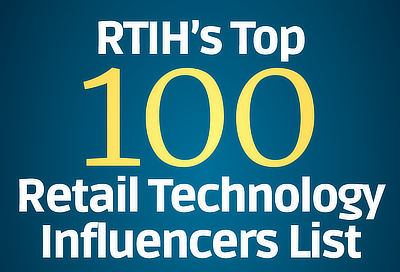Infographics
- April 22, 2025
The Growth of Industrial Robots by Country
In 2023, over 540,000 new industrial robots were installed, pushing the global total past 4 million for the first time. Overall, Asia accounted for 70% of these new installations while Europe and the Americas made up 17% and 10% shares, respectively. - From Visual Capitalist
- April 14, 2025
The Mobile Economy
Mobile technologies and services now generate around 5.8% of global GDP, a contribution that amounts to $6.5 trillion of economic value added. By 2030, this figure will rise to almost $11 trillion, or 8.4% of GDP. - From GSMA
- April 07, 2025
Retail Trends for 2025
- April 01, 2025
Most Common Types of Fraud in America
- March 10, 2025
World's Top 20 Economies by GDP Growth (2015-2025)
- February 10, 2025
50 Science Fiction Technologies and How Long They Took to Become Reality
List of 50 real-life technologies to showcase their journey from imaginative concept to tangible reality and explore how long it took to bring these futuristic ideas to life. - From Infographic Journal
- February 03, 2025
ChatGPT vs DeepSeek: A Detailed Comparison
- January 28, 2025
Visualizing How Americans Spend Their Money
More than ever, Americans are using debt and credit cards to fund these purchases. In the second half of 2024, household debt hit a record $17.9 trillion. At the same time, credit card debt surpassed a historic $1 trillion, climbing by 8.3% over the time period. - From Visual Capitalist
- January 20, 2025
What matters to today’s consumer 2025
The demand for 2-hour delivery has increased from 34% to 65% over the past two years. Quick commerce, supported by advanced logistics and AI, is set to dominate, with consumers willing to pay for speed. - From Capgemini
- January 06, 2025
Visualizing What the World Googled in 2024
- December 02, 2024
Gen Z to Lead the Shopping Charge this Holiday Season
- November 18, 2024
Retail Media: An Evolving Growth Opportunity that Won't Wait
Retail media is still surging. Ad spending with US retailers is growing 9X faster than traditional point-of-sale shopper marketing. - From Bain & Company
- November 05, 2024
Visualizing the Cost of the American Dream in 2024
While pandemic-led wage growth boosted real incomes, it followed five decades of stagnant wage increases. At the same time, housing prices have soared. Pushing up prices are a limited supply of homes, with home construction plummeting 55% compared to 2006. Together, these broad economic forces have made it harder to get ahead, even with a competitive salary. - From Visual Capitalist
- July 22, 2024
Visualizing the Cost of Hosting the Olympics
The Paris Olympics are estimated to cost over $9 billion to host, making them one of the less expensive Summer Olympic Games in recent memory. The International Olympic Committee requires cities to have at least 40,000 hotel rooms for spectators and an Olympic Village that can house 15,000 athletes and officials. - From Visual Capitalist
- July 08, 2024
The 10 Biggest Economies in the World Over Time
The United States leads world economies today. The only significant change of fate for the US was a dip in the 90s in which Japan surpassed the U.S. This huge economic boom in Japan was driven by their production of electronics and cars. They had a boom of industrial growth after the Korean War and an expanding, motivated workforce. - From Infographic Journal
Page 1 of 33
















